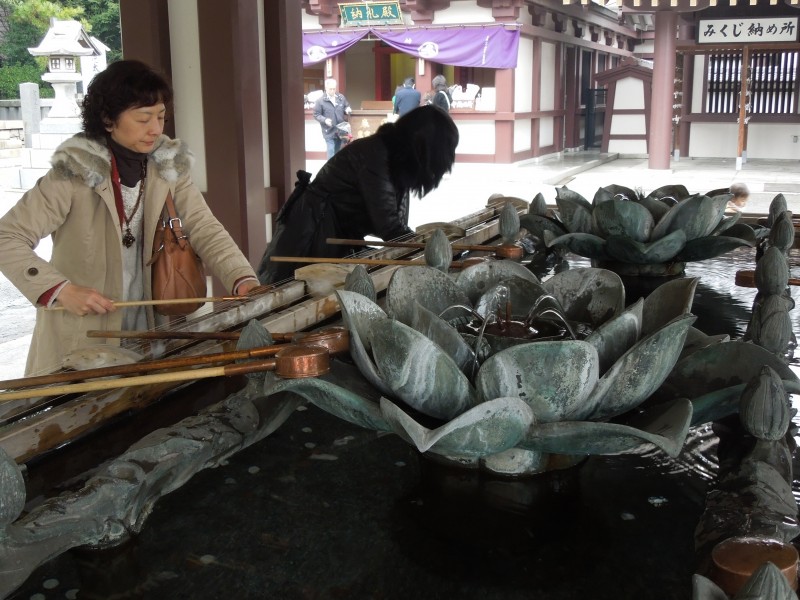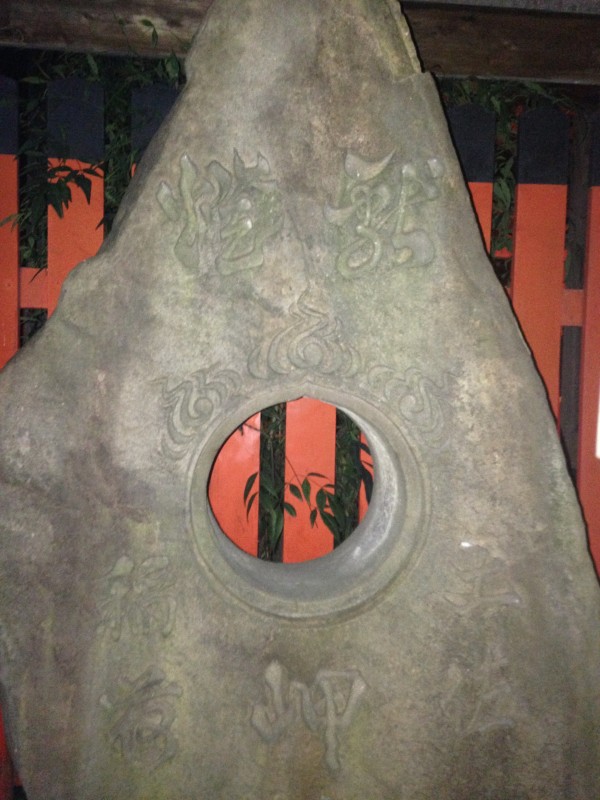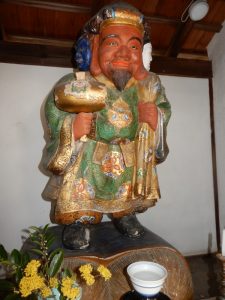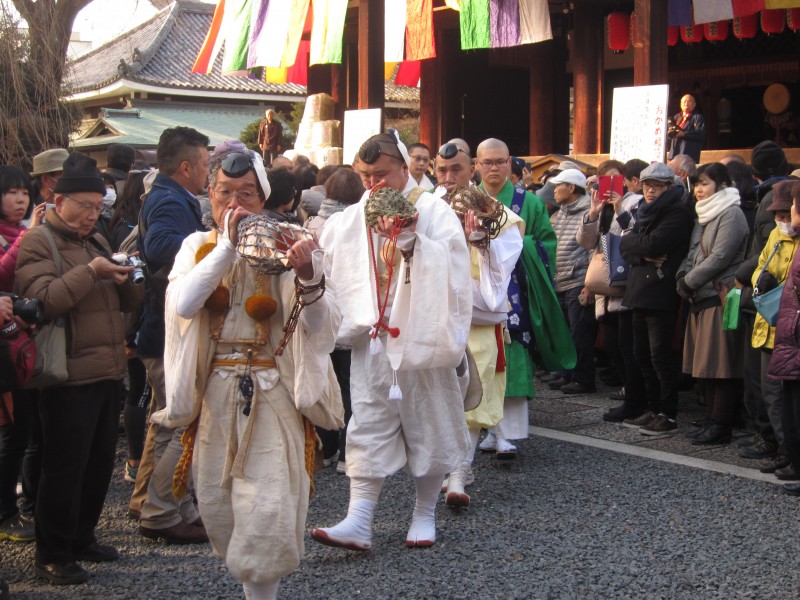
Lotus flower water basin at a Buddhist temple, influenced by the Shinto emphasis on purity and purification
It can prove difficult to find accounts of how Shinto shaped the nature of Buddhism in Japan, though once again it seems the pioneering Lafcadio Hearn actually covered this subject over a hundred years ago.
In his writings on Buddhism, he writes of the acceptance of the imported religion by a Japan which already had religious practices of its own (kami worship, shamanic rites, nature and ancestor worship, fertility cults, etc.). In response, Buddhism made modifications to its worldview in order to absorb and subjugate the native ways.

Sanskrit rock in a Shinto shrine
The most obvious way in which Buddhism adapted to Japan was in the adoption of kami. From early times Japanese kami were accepted as protective spirits, and an ideology subsequently developed in which the Shinto pantheon was integrated into the Buddhist cosmos as guardian figures with local manifestation rather than universal existence. In other words they were avatars. Another way of seeing them is as spirits of place rather than transcendental deities.
One of the salient features of pre-Buddhist Japan was the strong emphasis on ancestor worship. Hearn identified it as the bedrock of Japanese spirituality, which is evident still in today’s modernised and Westernised society. The Shinto ‘cult of the dead’ in terms of making offerings and cultivating the well-being of the deceased was taken up by Buddhism in its concern with funeral rites and ensuring a smooth transition from this world into the next.
Another aspect was the matter of conscience, to which Shinto gave high importance. The thinking was that since Japanese were of divine creation, they had an inbuilt notion of good and evil. Thus in Shinto there was no need for a written code of ethics. This was so deeply rooted that Buddhism had to find a way of incorporating the notion, and this they did by emphasising the inherent Buddha nature of human beings.

Daikoku – folk deity who straddles both Shinto and Buddhism
In his first book on Japan, Glimpses of Unfamiliar Japan (1894), Hearn is full of praise for the virtues of Japanese, including their tolerance, harmony and openness. Personally I see this as stemming from polytheism, which accepts that there are different versions of reality. It was reinforced by the extensive number of deities in the Buddhist pantheon.
Hearn is struck too by the funloving nature of religion in Japan, surely a legacy of Shinto’s life-affirming ways (as exemplified by its festivals). Sometimes the informality is striking: I’ve seen a man at Fushimi Inari speaking on his mobile phone while bowing and paying respects at a hokora (small shrine). ‘What has most impressed me is the seeming joyousness of popular faith,’ writes Hearn. ‘I have seen nothing grim, austere or self-repressive. The people take their religion lightly and cheerfully.’ (Glimpses of Unfamiliar Japan, p.34). Something of that surely has rubbed off on Buddhism in the festivals it shares with Shinto, such as Setsubun.
On the other hand, Hearn is at pains to point out the tremendous cultural benefits that Buddhism brought with it, nowhere more evident than in the fields of art and education. ‘The Buddhist painter opened to simple fancy the palaces of heaven, and guided hope,’ writes Hearn. (Images of kami only emerged after the arrival of Buddhism.) At the same time Buddhist temples became centres of learning, spreading even to ordinary people the ability to read and write. It’s the educational role of Buddhism that Hearn seems to value most. while seeing Shinto as ‘the soul of Japan’.

Setsubun is usually associated with Shinto’s celebration of seasonal rites, but Buddhists and mountain ascetics have adopted it too (picture taken at Kyoto’s Senbon Shaka-do)

Leave a Reply